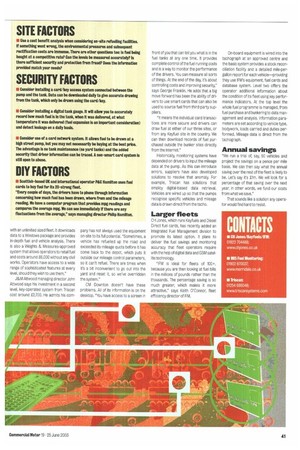SITE FACTORS
Page 41

If you've noticed an error in this article please click here to report it so we can fix it.
1g Use a cost benefit analysis when considering on-site refuelling facilities. If something went wrong, the environmental pressures and subsequent rectification costs are Immense. There are other questions too: is fuel being bought at a competitive rate? Can the levels be measured accurately? Is there sufficient security and protection from fraud? Does the Information provided match your needs?
SECURITY FACTORS
Consider Installing a card/key access system connected between the pump and the tank. Data can be downloaded daily to give accurate drawing from the tank, which only be drawn using the card/key.
Consider installing a digital tank gauge. It will allow you to accurately record how much fuel is in the tank, when It was delivered, at what temperature It was delivered (fuel expansion is an important consideration) and detect leakage on a daily basis.
M Consider use of a card network system. It allows fuel to be drawn at a high street pump, but you may not necessarily be buying at the best price. The advantage Is no tank maintenance (no yard tanks) and the added security that driver information can be traced. A non-smart card system Is still open to abuse.
DIY FACTORS
Scottish-based UK and international operator P&G Hamilton uses fuel cards to buy fuel for its 20-strong fleet.
'Every couple of days, the drivers have to phone through Information concerning how much fuel has been drawn, where from and the mileage reading. We have a computer program that provides mpg readings and compares the average mpg. We can see immediately If there are any fluctuations from the average,' says managing director Philip Hamilton.














































































































































































